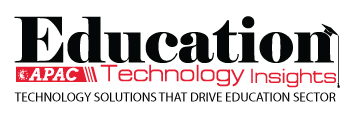THANK YOU FOR SUBSCRIBING
Be first to read the latest tech news, Industry Leader's Insights, and CIO interviews of medium and large enterprises exclusively from Education Technology Insights
Designing Learning that Transforms and Fosters Change
Sangeetha Carmona, Adjunct Faculty, California State University, Fullerton
 Sangeetha Carmona, Adjunct Faculty, California State University, Fullerton
Sangeetha Carmona, Adjunct Faculty, California State University, FullertonMy journey hasn’t been a straight trajectory leading to where I am now. It has been an adventure figuring out what positive impact I can have within my sphere of influence and how. However, I always had a constant focus on teaching and learning. I am where I am today because of the strong relationships I built while a student at the university, which is also closely connected to the work I was doing in the field.
Having navigated the corporate, K-12 and university worlds, I found that teaching and designing instruction bring me joy and a satisfaction that is hard to describe. Whenever I grade or design instruction, I go into a flow state. That’s when I know I am doing what I love.
Many times, I have watched a leader or professor and admired their work and teachings, striving to emulate them. What I learned along the way is that we only see and hear what the other person shares. But we never truly know their real story—their strengths, struggles and wins and despite their struggles.
Designing Inclusive and Engaging Online Learning
Our program is asynchronous and fully online, designed to provide flexibility for students to complete their assignments on a weekly basis within a given schedule for each course. However, this can lead to isolation, since we not only learn through cognition and practice but also through observation, social interaction and experiences.
This is why I have started embedding student-facing language in my syllabus, and I adjust my course content based on periodic survey responses from my students. Every course has a built-in experiential learning component to help them see the applications of what they are learning in practice.
“Attempting to create an inclusive technologyenhanced learning space that empowers students to effect change within a system that still relies on grades can be a daunting task. Start slowly and gradually incorporate this beautiful change over time.”
In addition to my weekly synchronous office hours, I have also included optional synchronous live chats to discuss challenging concepts and complex assignments and provide an opportunity for students to think critically. I also offer students various ways to connect and meet with me throughout the week, as well as on weekends when possible. Building a community of practice related to a degree program provides students with opportunities to give themselves grace and a safe space for discourse, while learning from one another and receive the support they need.
Emphasizing Critical Thinking and Learner Agency
One of the most effective ways for ensuring inclusivity is to use Universal Design for Learning checkpoints within my course redesign. Our students learn, practice and apply these principles within their degree program in various courses. Demonstrating how I use it solidifies their learning, and they are able to transfer that knowledge into various other spaces.
Many times, we evaluate rigor based on the technical aspects of scholarly work, which may not be ideal way to master scholarly writing skills. For example, we tend to focus on APA formatting, a specific number of references and a certain number of pages, among other requirements that are required for a research paper. I have started focusing more on critical thinking. Questions such as, why would this source be more beneficial to a paper? Why write this paper? Connecting their research work to design practices and how they inform each other is something I am helping them see so they can find a good balance of theory and practice and not get lost in the weeds of scholarly work.
While attempting to create an inclusive technology-enhanced learning space that empowers students to effect change within a system that still relies on grades in a more quantitative manner can be a daunting task. I suggest starting slowly and gradually incorporating this beautiful change over time. Our learners come from diverse backgrounds, and they all have varying rates of learning and embracing new ideas. Give them time to process and learn. Teach them to be okay with making mistakes. Treat these as learning opportunities.
I have found Julie Dirksen a strong influence in my decisions and my style for teaching and designing instruction. I have adopted an approach she suggested in her book Design for How People Learn. Some questions I ask are:
• Why, why—no really, why? (to arrive at the core of a problem)
• What bad thing will happen if they (the learners) don’t know? (to identify the intensity or need of this information)
• Is this something they (the learners) will do in the real world, and what would be the consequence if done well? (to visualize what a positive learning outcome would look like)
This informs how I teach and how my students learn to become agents of change. It is a process and is woven into their curriculum over time within our 5-semester program.
Read Also
Designing Learning that Transforms and Fosters Change
Stop Chasing Interesting. Start Choosing Impact.
Leading with Purpose to Strengthen Campus Belonging
Achieving Educational Excellence through Meaningful Engagements
Beyond Administration: How a School Management System Transforms Learning Communities
Empowering Educators through Purposeful, Connected and Transformative Learning

I agree We use cookies on this website to enhance your user experience. By clicking any link on this page you are giving your consent for us to set cookies. More info

However, if you would like to share the information in this article, you may use the link below:
www.educationtechnologyinsightsapac.com/cxoinsights/sangeetha-carmona-nid-3586.html




















